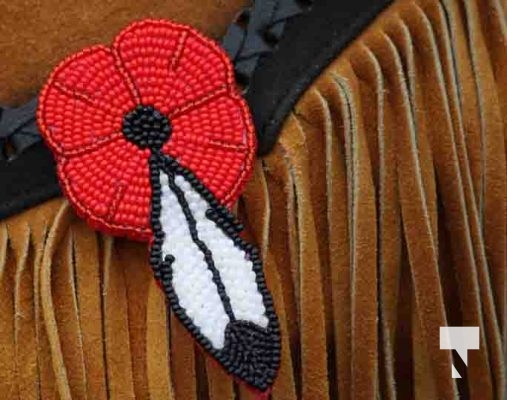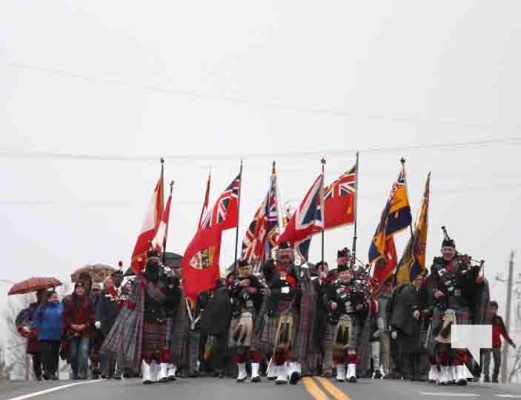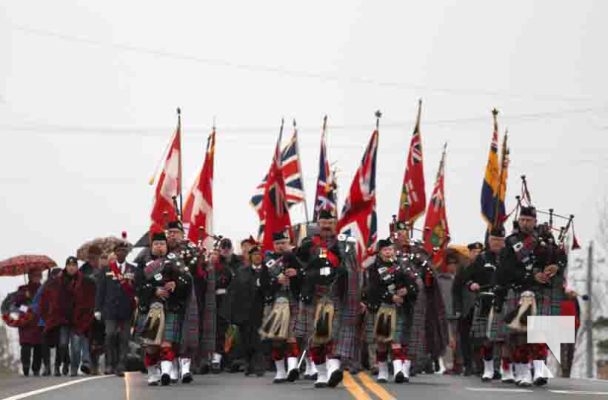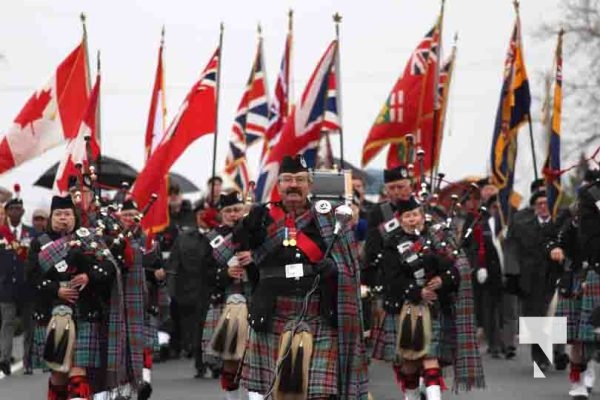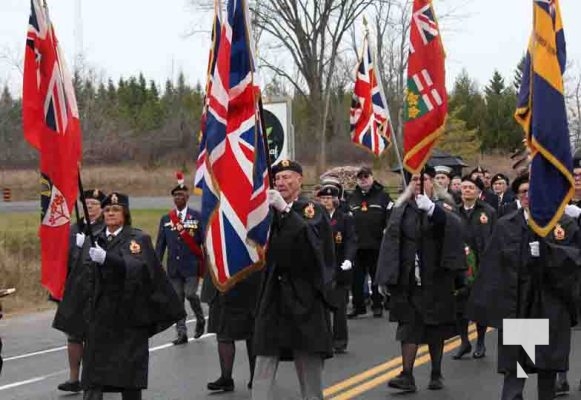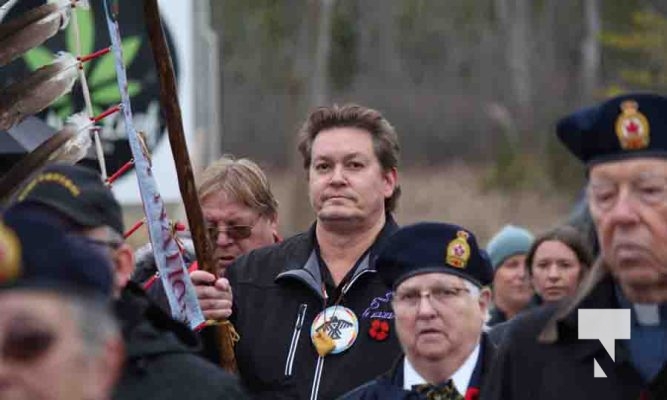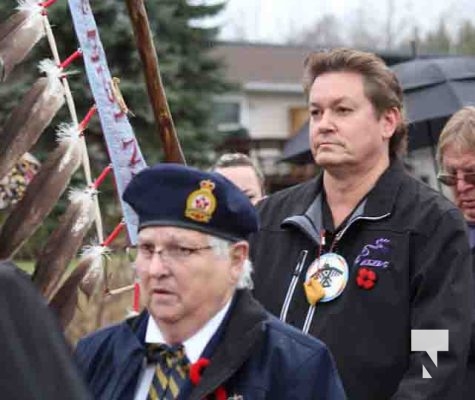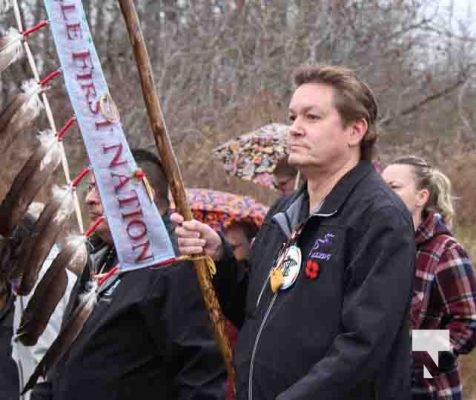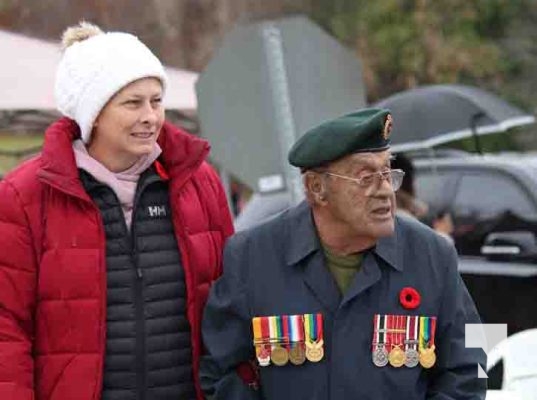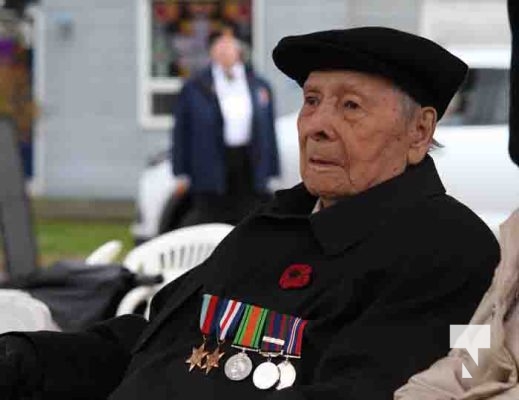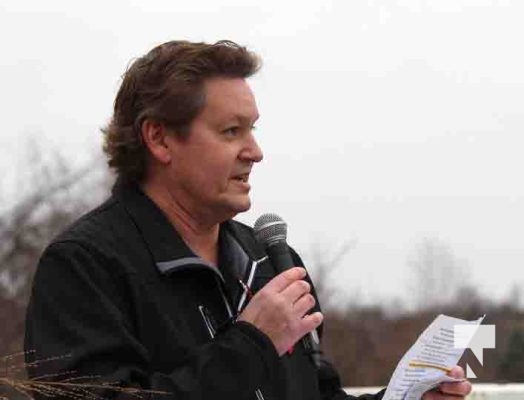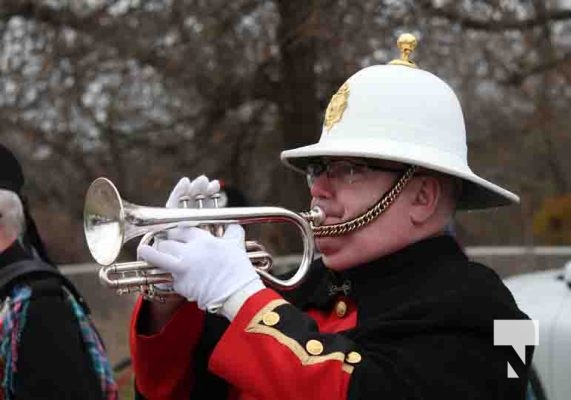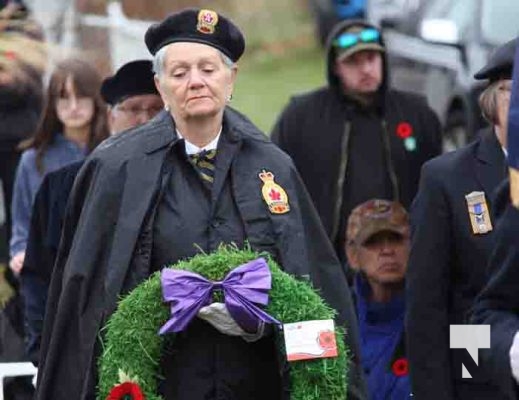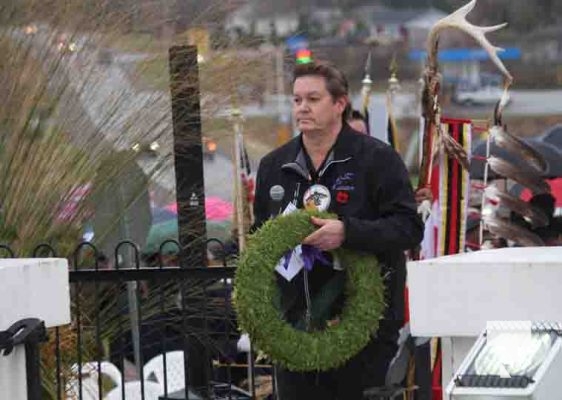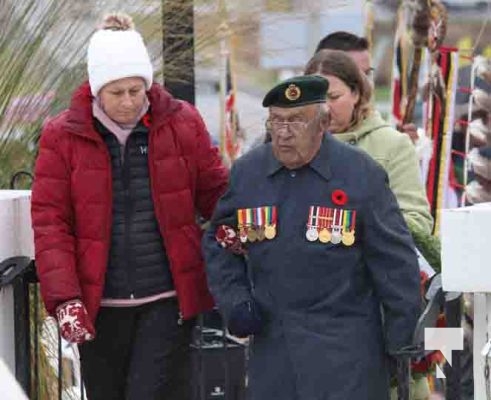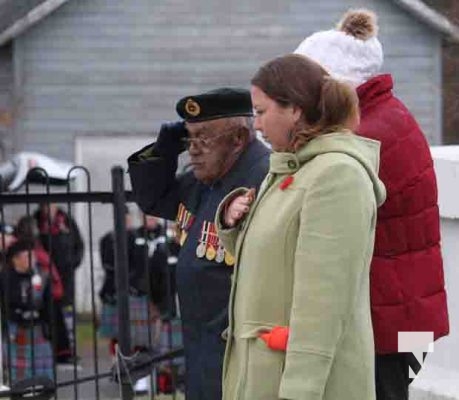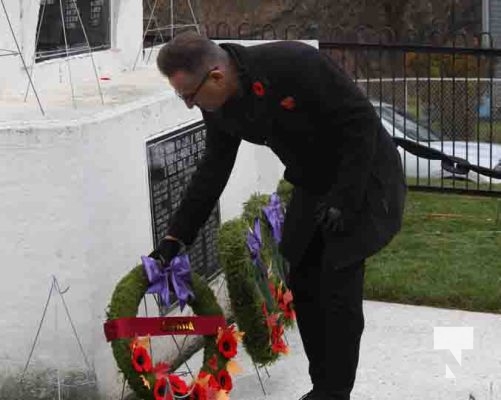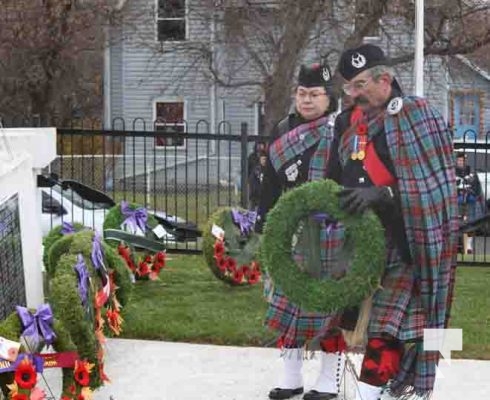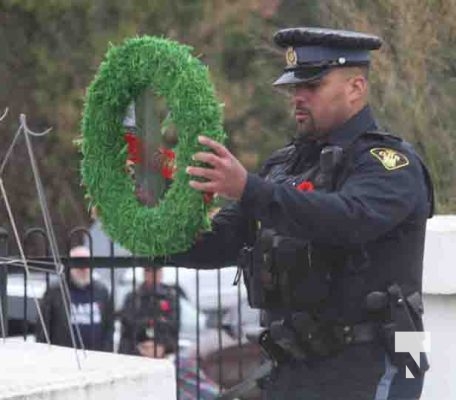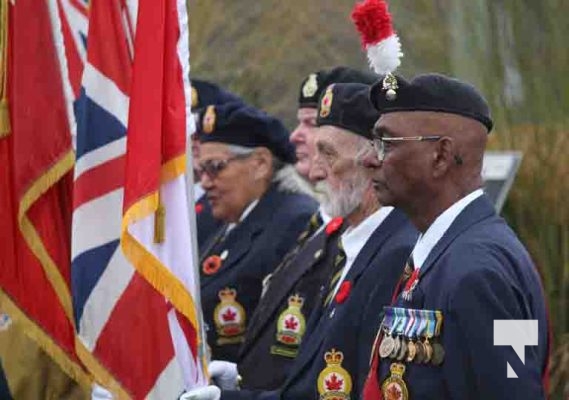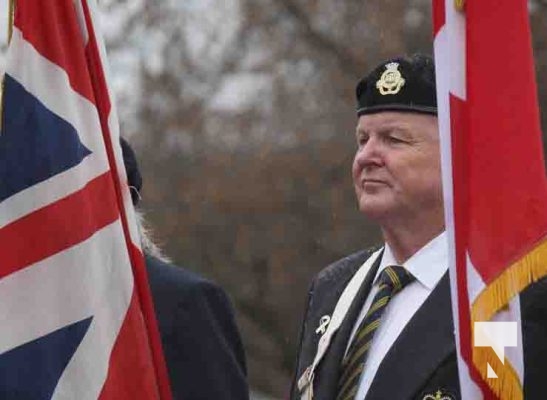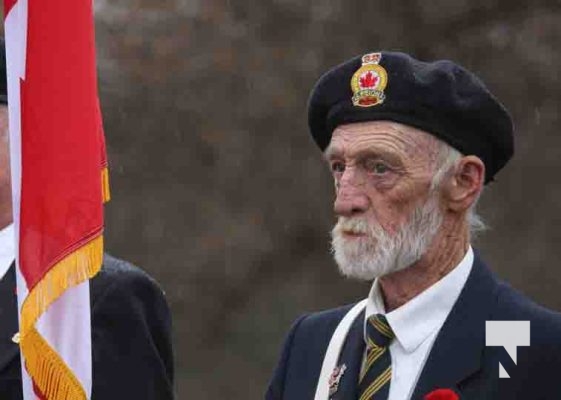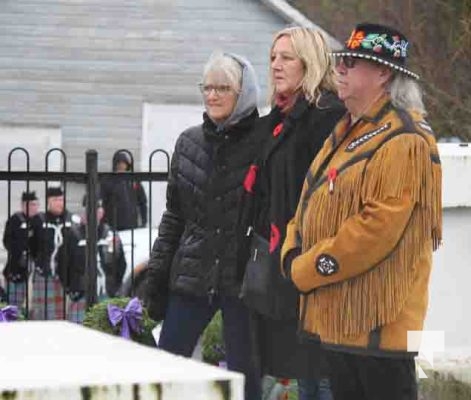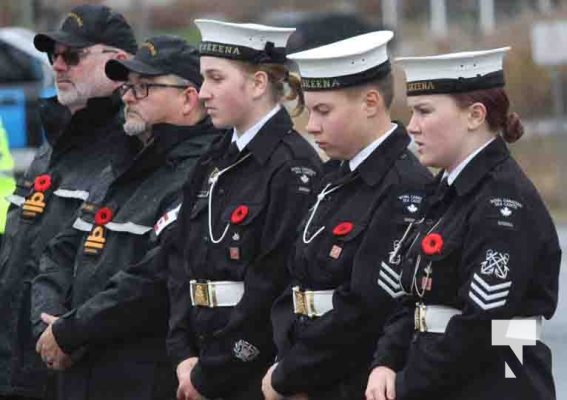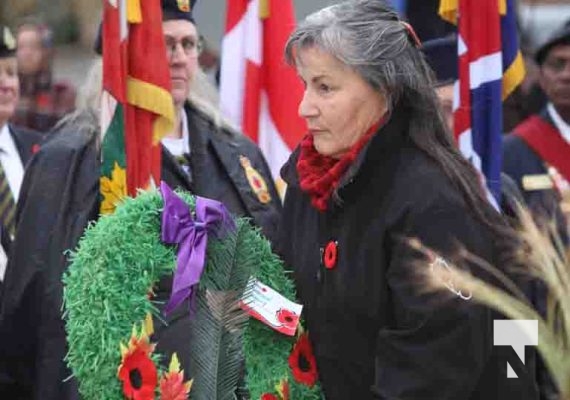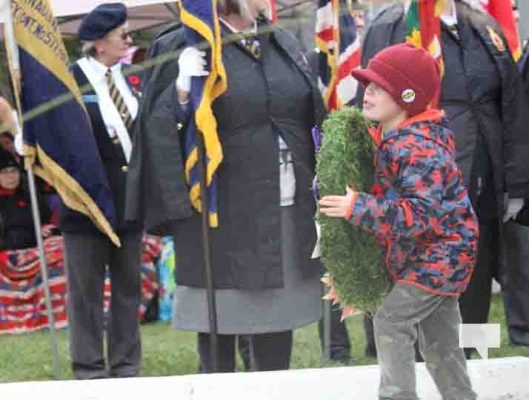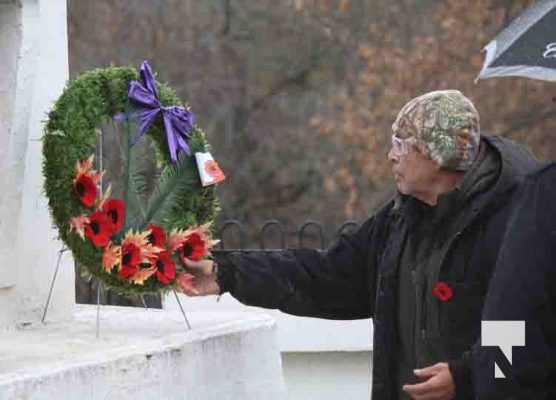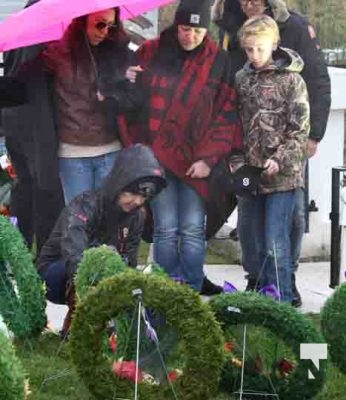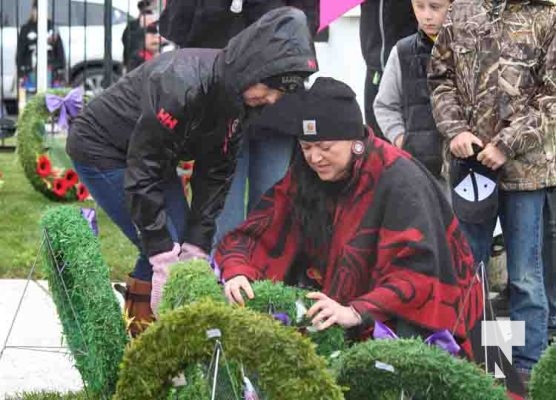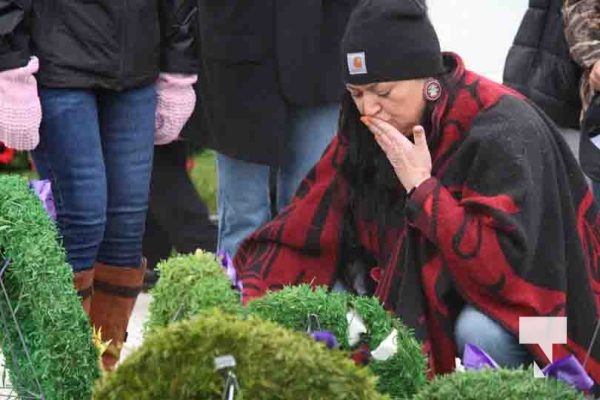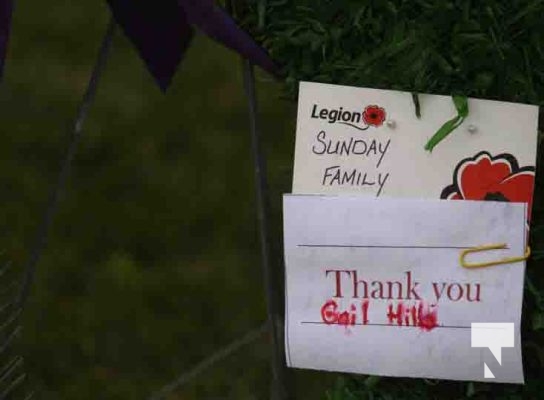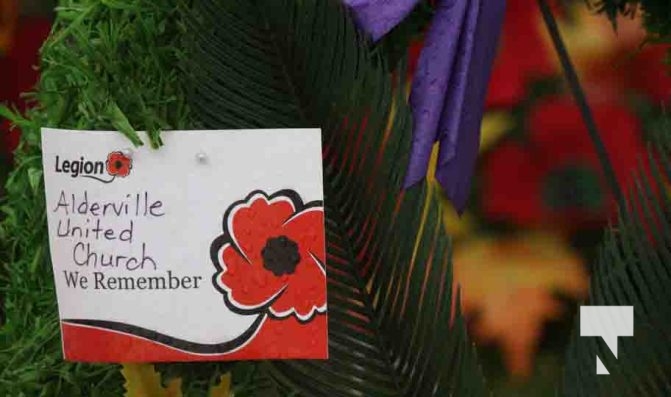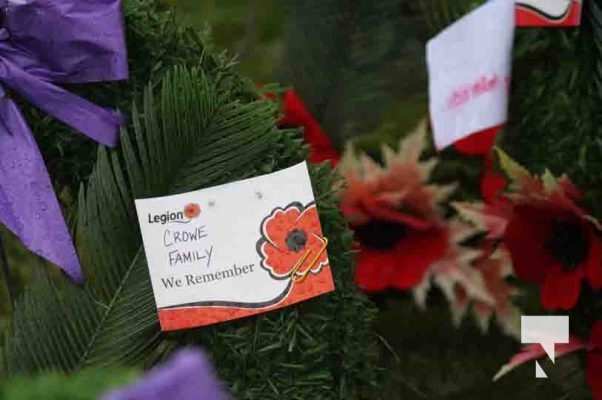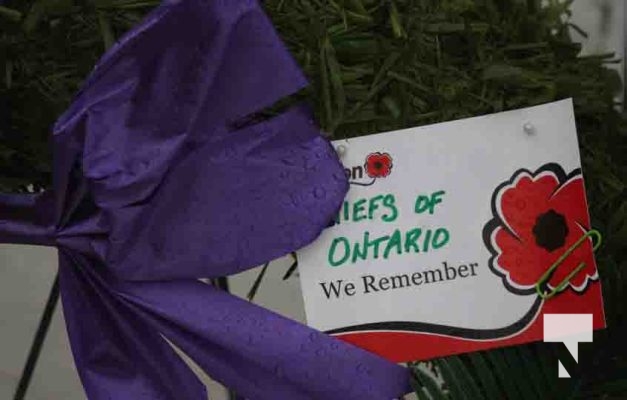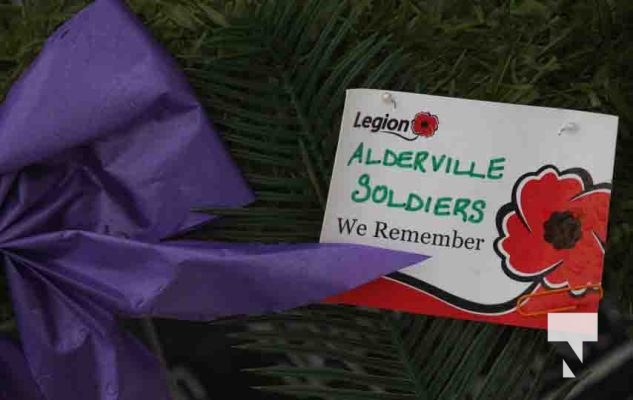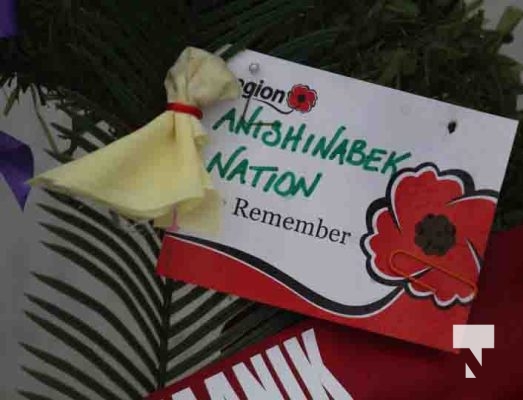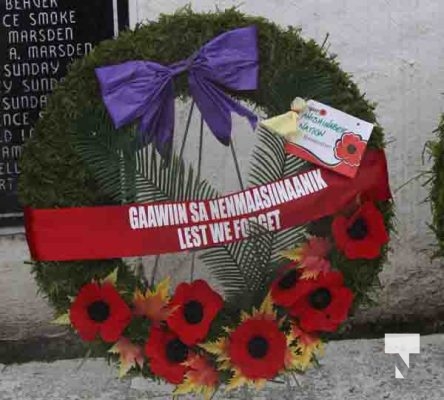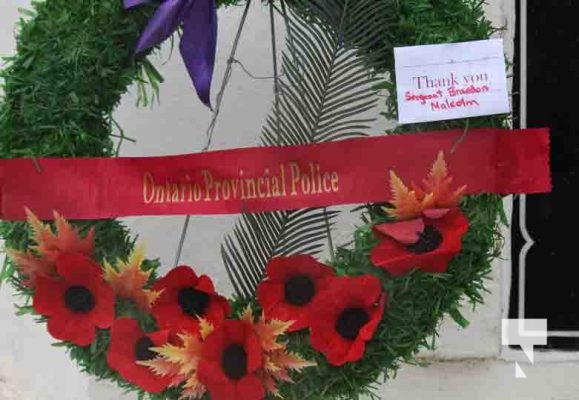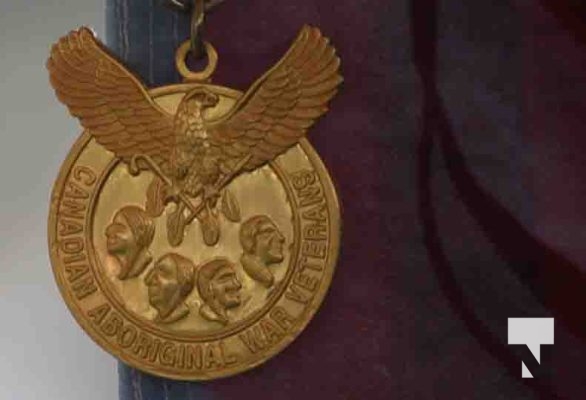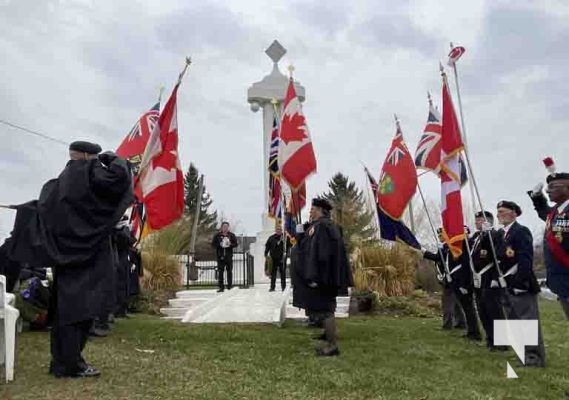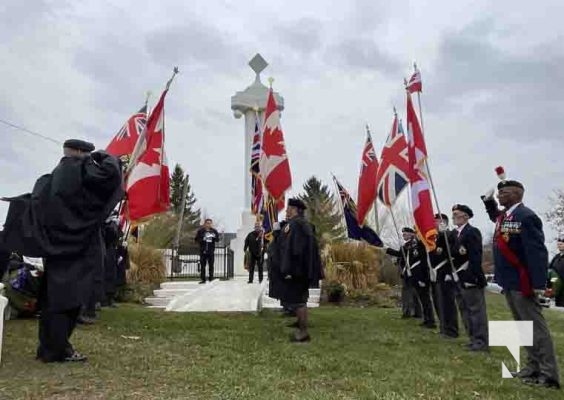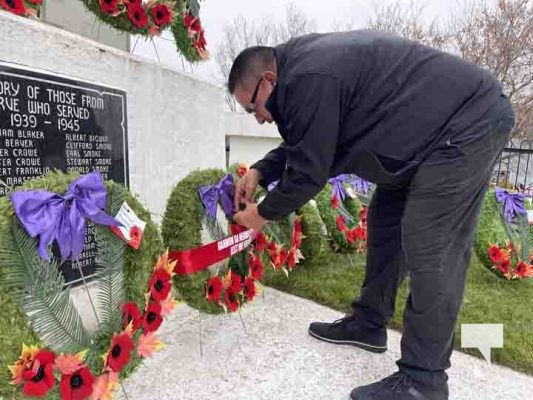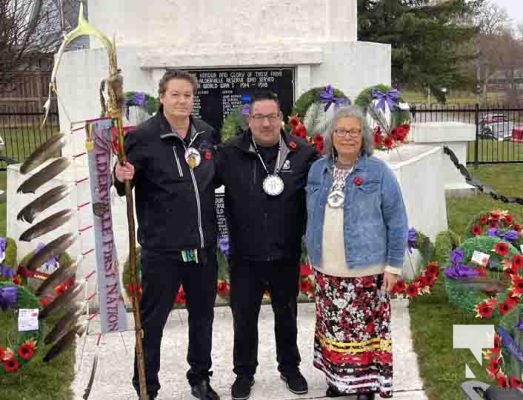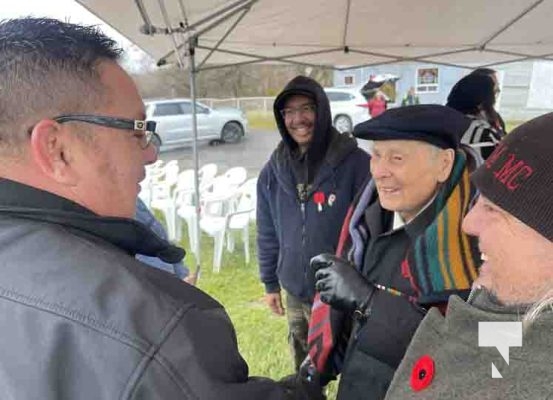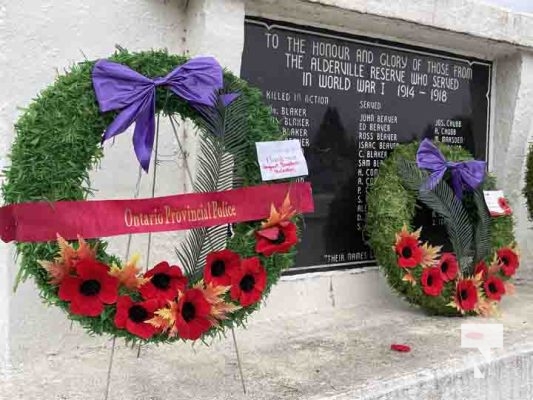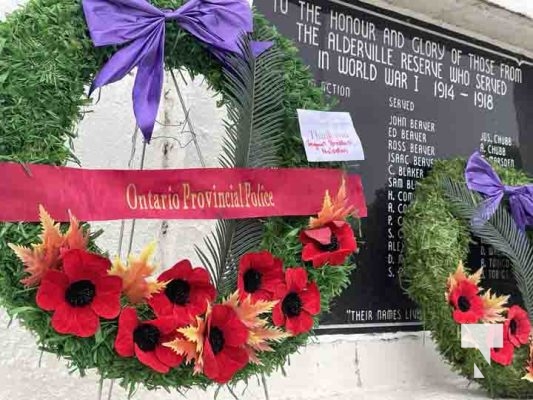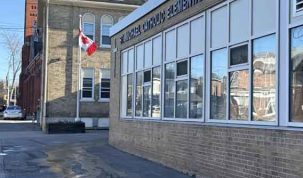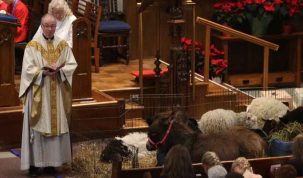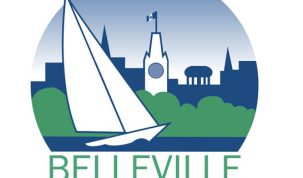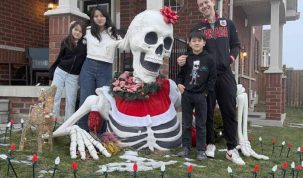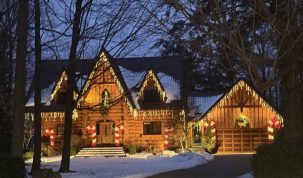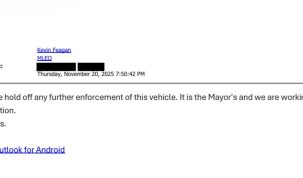Alderville held their annual Remembrance Service on Sunday, November 10, 2024.
Members of the Cobourg Legion Pipes and Drums lead dignitaries and community members from the Alderville Community Centre to the cenotaph for the service at 1 p.m.
Alderville First Nation Chief Taynar Simpson lead the service reading the names of the enlisted and fallen from the community before wreathes were placed.
It was the first time that Deputy Grand Council Chief of the Anishinabek Nation, Christopher Plain attended the service stating years ago he had passed by the cenotaph and was honoured to attend on Sunday.
After doing research on the cenotaph he learned that almost every person volunteered and enlisted for service.
“It’s a small community and you can see the amount of names. That’s just a testament to our people and to the sacrifices they made for our county and for the freedom of our people as well.”
Simpson said Alderville First Nation “answered the call in force. Alderville members young and old joined. – to protect our young nation. To protect what we knew to be our freedoms.”
Simpson’s family served and said, “we can’t let it fall into history. This needs to be remembered forever. I just want to honour those who came back and those who didn’t.”
The Alderville War Monument was unveiled on Sunday September 25, 1927 to a large crowd (some 3000 people) of community members, neighbouring communities, and dignitaries who had gathered for the commemoration of those who gave so much in the Great War, 1914-1918.
The first sod was turned on Sunday August 21st and within just over a month some 468 tons of concrete had been poured raising this unique design almost 50 feet. Clarence and Alf McKeel were the two Campbellford, Ontario men who contributed the design and technical advice on its construction, while the local men and women supplied the labour and hospitality.
Originally built to honour the 33 Alderville men who enlisted for service during the Great War including the 9 who gave up their lives, it now also commemorates the contributions made by Alderville during WW11, Korea, and peacetime. But it was the Great War, ‘the war to end all wars’ that could have only been in the minds of the people that day in 1927.
Described as “one of the most remarkable monuments in the whole of Canada” this beautiful structure “was the first erected in Canada to commemorate the service of Indians in the First World War.” 2007 marked the 80th anniversary of the construction of this “astounding” and purposely imposing memorial to the warriors of Alderville First Nation.
There are two plaques on the cenotaph, the first commemorating those who fought in World War I. Later another plaque was added to commemorate soldiers that served and died in World War II, Korea and Vietnam.
The monument has several symbolic features. The cube on top symbolizes the four directions of the earth. The three globes beneath signify the Holy Trinity. The three large pillars supporting the above represent the three holy virtues; faith, hope and charity. The square base on which the monument stands represents the four fundamental freedoms. The chain that encircles the entire monument symbolizes eternity, and the links that make up this chain represents each person who served during the wars.
Lastly, the nine cubes which connect this chain together represent the nine men who lost their lives during the First World War.
The monument was with the hard physical labour of many volunteers. The men used hand shovels and muscle to stir the cement which makes up the monument. The women spent hours cooking and supplying meals for the hard-working volunteers.
The Alderville Cenotaph was honoured as the British dirigible. the R-100, passed overhead during its visit to Canada. The R-100 dipped its nose in tribute to Alderville’s heroic war record.
The Cenotaph is still cherished by the members of the community. Ever year on November 11, the community gathers at the Cenotaph to pay their respects to the men and women who participated in the wars. Alderville First Nation will always remember those who died for our freedom.
World War I
Enlisted: John Beaver, Edward Beaver, Ross Beaver, Isaac Beaver, Clarence Blaker, Henry Comego, A. Comego, Peter Comego, Smith Comego, Alex Comedo, Davie (Madden) Crowe, S. Crowe, Jos. Chubb, A. Chubb, Moses Marsden, Norman Marsden, Robert Frankly, S. Hagar, Noa Smoke, S. Smoke, M. Smoke, Wm. Stevenson, D. Wheeler, Alan Tobico, J. Tobico
Killed in Action
Wm. Blaker, Joshua Blaker, Victor Blaker, Austin Beaver, Sampson Comego, Wm. Hagar, W. Frankly, Arch Simpson, Robert Tobico
World War II
Enlisted: Alvain Beaver, Edward Beaver, Ivan Beaver, William Bigwin, George Blaker, Lawson Chase, Stewart Comego, Gerald Gray, Alvin Hagar, Amos Marsden, Thomas Marsden, Everett Simpson, Eldon Smoke, Reg Smoke, Roy Smoke, George Gray, James Smoke, John Sunday, Wilfred Sunday Sr., Wilfred Sunday Jr., Clarence Sunday, Cecil Tobico, Arthur Wheeler, Alfred Loukes, Danial Simpson, William Stevenson, Ephriam Blaker, John Beaver, Oliver Crowe, Walter Crowe, Robert Franklin, Fred Marsden, Lawrence Marsden, Bruce Marsden, Ben Chubb, Norman Marsden Sr., Norman Marsden Jr., Raymond Blaker, Leslie Marsden, Howard Smoke, Robert Marsden Leonard Smoke, Albert Bigwin, Clifford Smoke, Earl Smoke, Stewart Smoke, Donald Smoke, Elmer Beaver, Beatrice Smoke, James Marsden, Percy Marsden.
Killed in Action
Wilburn Chubb, Arthur Beaver


